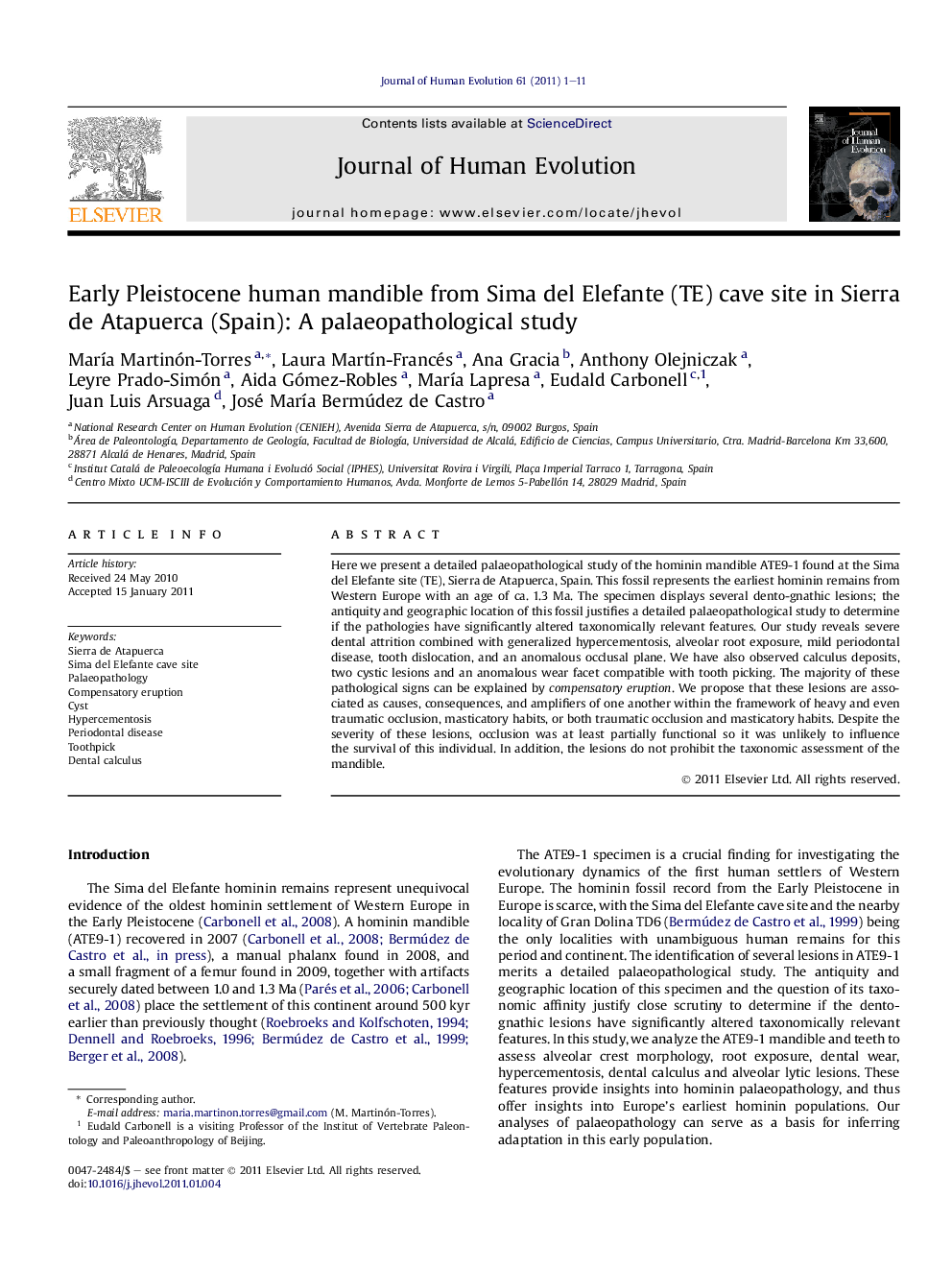| کد مقاله | کد نشریه | سال انتشار | مقاله انگلیسی | نسخه تمام متن |
|---|---|---|---|---|
| 4556561 | 1329488 | 2011 | 11 صفحه PDF | دانلود رایگان |

Here we present a detailed palaeopathological study of the hominin mandible ATE9-1 found at the Sima del Elefante site (TE), Sierra de Atapuerca, Spain. This fossil represents the earliest hominin remains from Western Europe with an age of ca. 1.3 Ma. The specimen displays several dento-gnathic lesions; the antiquity and geographic location of this fossil justifies a detailed palaeopathological study to determine if the pathologies have significantly altered taxonomically relevant features. Our study reveals severe dental attrition combined with generalized hypercementosis, alveolar root exposure, mild periodontal disease, tooth dislocation, and an anomalous occlusal plane. We have also observed calculus deposits, two cystic lesions and an anomalous wear facet compatible with tooth picking. The majority of these pathological signs can be explained by compensatory eruption. We propose that these lesions are associated as causes, consequences, and amplifiers of one another within the framework of heavy and even traumatic occlusion, masticatory habits, or both traumatic occlusion and masticatory habits. Despite the severity of these lesions, occlusion was at least partially functional so it was unlikely to influence the survival of this individual. In addition, the lesions do not prohibit the taxonomic assessment of the mandible.
Journal: Journal of Human Evolution - Volume 61, Issue 1, July 2011, Pages 1–11